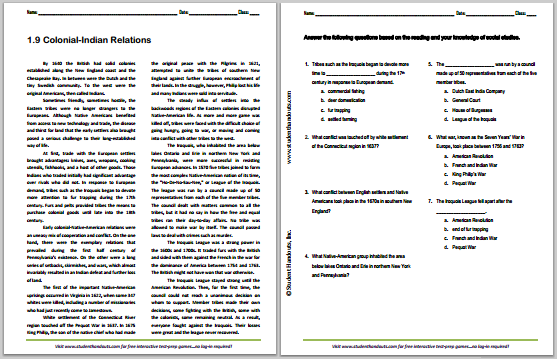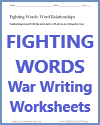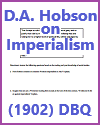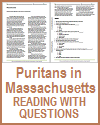| Colonial-Indian Relations Reading with Questions |
|---|
| www.studenthandouts.com ↣ American History ↣ American History Readings |
 By 1640 the British had solid colonies established along the New England coast and the Chesapeake Bay. In between were the Dutch and the tiny Swedish community. To the west were the original Americans, then called Indians.
By 1640 the British had solid colonies established along the New England coast and the Chesapeake Bay. In between were the Dutch and the tiny Swedish community. To the west were the original Americans, then called Indians.Sometimes friendly, sometimes hostile, the Eastern tribes were no longer strangers to the Europeans. Although Native Americans benefited from access to new technology and trade, the disease and thirst for land that the early settlers also brought posed a serious challenge to their long-established way of life. At first, trade with the European settlers brought advantages: knives, axes, weapons, cooking utensils, fishhooks, and a host of other goods. Those Indians who traded initially had significant advantage over rivals who did not. In response to European demand, tribes such as the Iroquois began to devote more attention to fur trapping during the 17th century. Furs and pelts provided tribes the means to purchase colonial goods until late into the 18th century. Early colonial-Native-American relations were an uneasy mix of cooperation and conflict. On the one hand, there were the exemplary relations that prevailed during the first half century of Pennsylvania's existence. On the other were a long series of setbacks, skirmishes, and wars, which almost invariably resulted in an Indian defeat and further loss of land. The first of the important Native-American uprisings occurred in Virginia in 1622, when some 347 whites were killed, including a number of missionaries who had just recently come to Jamestown. White settlement of the Connecticut River region touched off the Pequot War in 1637. In 1675 King Philip, the son of the native chief who had made the original peace with the Pilgrims in 1621, attempted to unite the tribes of southern New England against further European encroachment of their lands. In the struggle, however, Philip lost his life and many Indians were sold into servitude. The steady influx of settlers into the backwoods regions of the Eastern colonies disrupted Native-American life. As more and more game was killed off, tribes were faced with the difficult choice of going hungry, going to war, or moving and coming into conflict with other tribes to the west. The Iroquois, who inhabited the area below lakes Ontario and Erie in northern New York and Pennsylvania, were more successful in resisting European advances. In 1570 five tribes joined to form the most complex Native-American nation of its time, the "Ho-De-No-Sau-Nee," or League of the Iroquois. The league was run by a council made up of 50 representatives from each of the five member tribes. The council dealt with matters common to all the tribes, but it had no say in how the free and equal tribes ran their day-to-day affairs. No tribe was allowed to make war by itself. The council passed laws to deal with crimes such as murder. The Iroquois League was a strong power in the 1600s and 1700s. It traded furs with the British and sided with them against the French in the war for the dominance of America between 1754 and 1763. The British might not have won that war otherwise. The Iroquois League stayed strong until the American Revolution. Then, for the first time, the council could not reach a unanimous decision on whom to support. Member tribes made their own decisions, some fighting with the British, some with the colonists, some remaining neutral. As a result, everyone fought against the Iroquois. Their losses were great and the league never recovered. |
|
Directions: Read the text above, then answer the questions below.
1. Tribes such as the Iroquois began to devote more time to ____________________ during the 17th century in response to European demand. a. commercial fishing b. deer domestication c. fur trapping d. settled farming 2. What conflict was touched off by white settlement of the Connecticut region in 1637? 3. What conflict between English settlers and Native Americans took place in the 1670s in southern New England? 4. What Native-American group inhabited the area below lakes Ontario and Erie in northern New York and Pennsylvania? 5. The ____________________ was run by a council made up of 50 representatives from each of the five member tribes. a. Dutch East India company b. General Court c. House of Burgesses d. League of the Iroquois 6. What war, known as the Seven Years' War in Europe, took place between 1756 and 1763? a. American Revolution b. French and Indian War c. King Philip's War d. Pequot War 7. The Iroquois League fell apart after the ____________________. a. American Revolution b. end of fur trapping c. French and Indian War d. Pequot War Click here to print this worksheet. |
 |
 |
 |
 |
 |
 |
| Early America Books and Films | Early America Image Galleries |
| Early America Learning and Study Games | Early America Miscellany |
| Early America Outlines and PowerPoints | Early America Worksheets |
| www.studenthandouts.com ↣ American History ↣ American History Readings |








